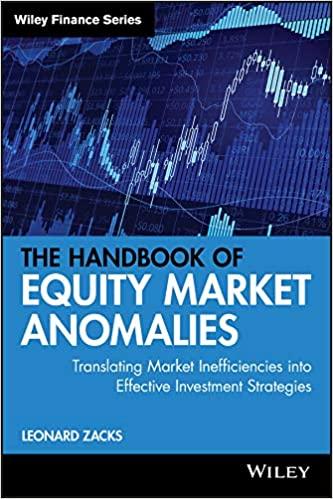Question
Louis Vuitton v Haute Diggity case RULE: For trademark purposes, a parody is defined as a simple form of entertainment conveyed by juxtaposing the irreverent
Louis Vuitton v Haute Diggity case
RULE:
For trademark purposes, a "parody" is defined as a simple form of entertainment conveyed by juxtaposing the irreverent representation of the trademark with the idealized image created by the mark's owner. A parody must convey two simultaneous -- and contradictory -- messages: that it is the original, but also that it is not the original and is instead a parody. This second message must not only differentiate the alleged parody from the original but must also communicate some articulable element of satire, ridicule, joking, or amusement. Thus, a parody relies upon a difference from the original mark, presumably a humorous difference, in order to produce its desired effect.
FACTS:
Louis Vuitton Malletier S.A. (LVM), a French corporation located in Paris that manufactures luxury luggage, handbags, and accessories, filed this action against Haute Diggity Dog, LLC, a Nevada corporation that manufactures and sells pet products nationally, alleging trademark infringement under 15 U.S.C. 1114(1)(a), trademark dilution under 15 U.S.C. 1125(c), copyright infringement under 17 U.S.C. 501, and related statutory and common law violations. Haute Diggity Dog manufactures, among other things, plush toys on which dogs can chew, which, it claims, parody famous trademarks on luxury products, including those of LVM. The particular Haute Diggity Dog chew toys in question here are small imitations of handbags that are labeled "Chewy Vuiton" and that mimic LVM's LOUIS VUITTON handbags.
The district court concluded that Haute Diggity Dog's "Chewy Vuiton" dog toys were successful parodies of LVM's trademarks, designs, and products, and on that basis, entered judgment in favor of Haute Diggity Dog on all of LVM's claims. LVM appealed and challenged, as a matter of law, the ruling made by the district court.
ISSUE:
Were Haute Diggity Dog, LLC.s marks a successful parody that would not blur the distinctiveness of LVMs famous mark?
ANSWER:
Yes.
CONCLUSION:
The Court found that Haute Diggity Dog's products are not likely to cause confusion with those of LVM and that LVM's copyright was not infringed. The likelihood-of-confusion factors substantially favor Haute Diggity Dog. But consideration of these factors is only a proxy for the ultimate statutory test of whether Haute Diggity Dog's marketing, sale, and distribution of "Chewy Vuiton" dog toys is likely to cause confusion. Recognizing that "Chewy Vuiton" is an obvious parody and applying the Pizzeria Unofactors, the Court concluded that LVM had failed to demonstrate any likelihood of confusion.
On the trademark dilution claim, however, the Court rejected the district court's reasoning but reached the same conclusion through a different analysis. The Court first assessed LVM's claim for dilution by blurring, and ruled that LVM has failed to make out a case of trademark dilution by blurring by failing to establish that the distinctiveness of its marks was likely to be impaired by Haute Diggity Dog's marketing and sale of its "Chewy Vuiton" products. LVM also failed to demonstrate a claim for dilution by tarnishment. To establish its claim for dilution by tarnishment, LVM must show, in lieu of blurring, that Haute Diggity Dog's use of the "Chewy Vuiton" mark on dog toys harms the reputation of the LOUIS VUITTON mark and LVM's other marks. LVM argued that the possibility that a dog could choke on a "Chewy Vuiton" toy causes this harm. There was no record support, however, that any dog has choked on a pet chew toy, such as a "Chewy Vuiton" toy, or that there is any basis from which to conclude that a dog would likely choke on such a toy.
1. What happened in this case? What legal principles resolved the case?
2. What mistakes were made in this case -- and by who?
3. What business lessons can be learned from this case?
4. Are there any other interesting points, facts or research you want to share about this case?
Your entire answer should run a total of no longer than one to two pages (for all four questions combined). Each question can be addressed with a paragraph or two.
Step by Step Solution
There are 3 Steps involved in it
Step: 1

Get Instant Access to Expert-Tailored Solutions
See step-by-step solutions with expert insights and AI powered tools for academic success
Step: 2

Step: 3

Ace Your Homework with AI
Get the answers you need in no time with our AI-driven, step-by-step assistance
Get Started


